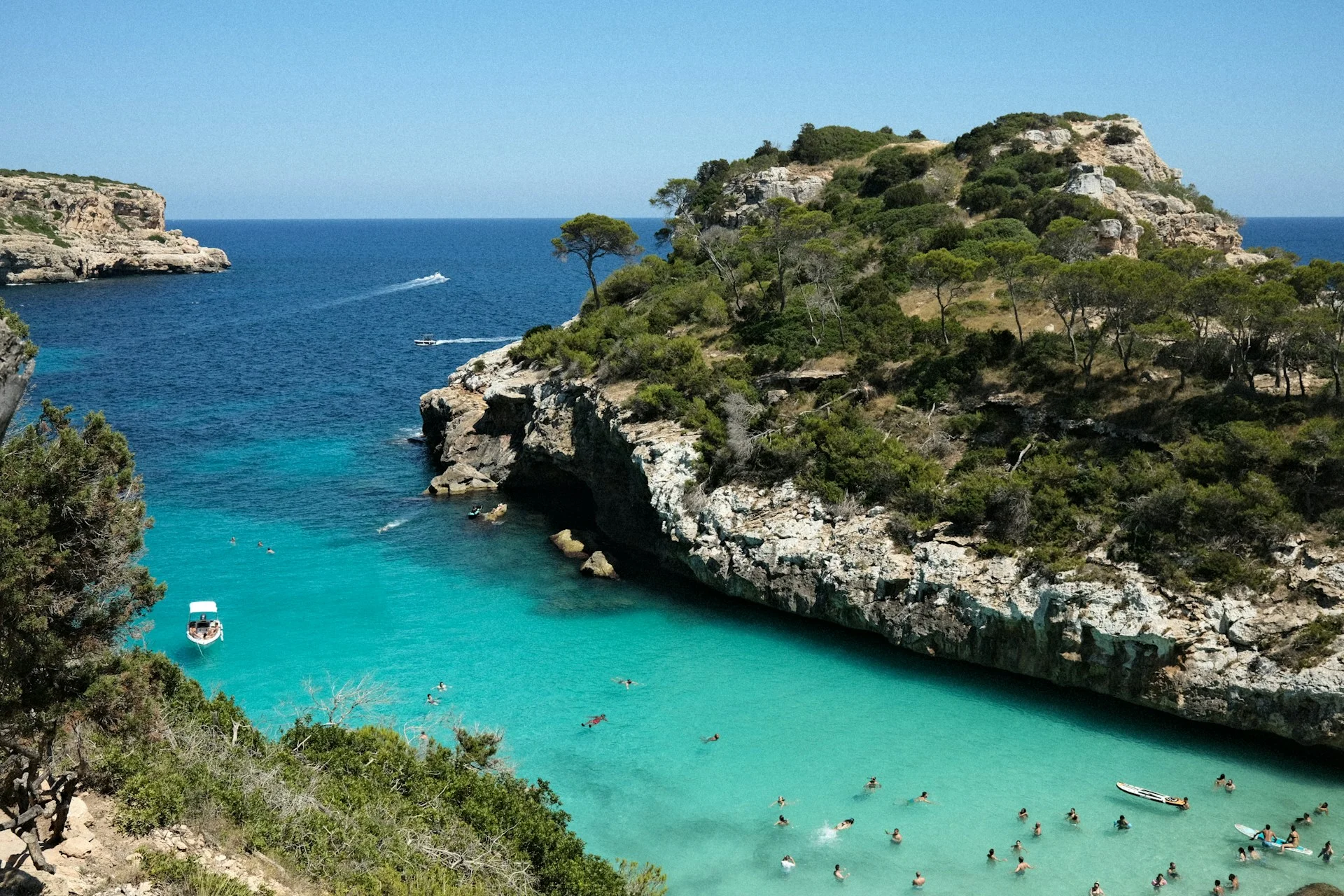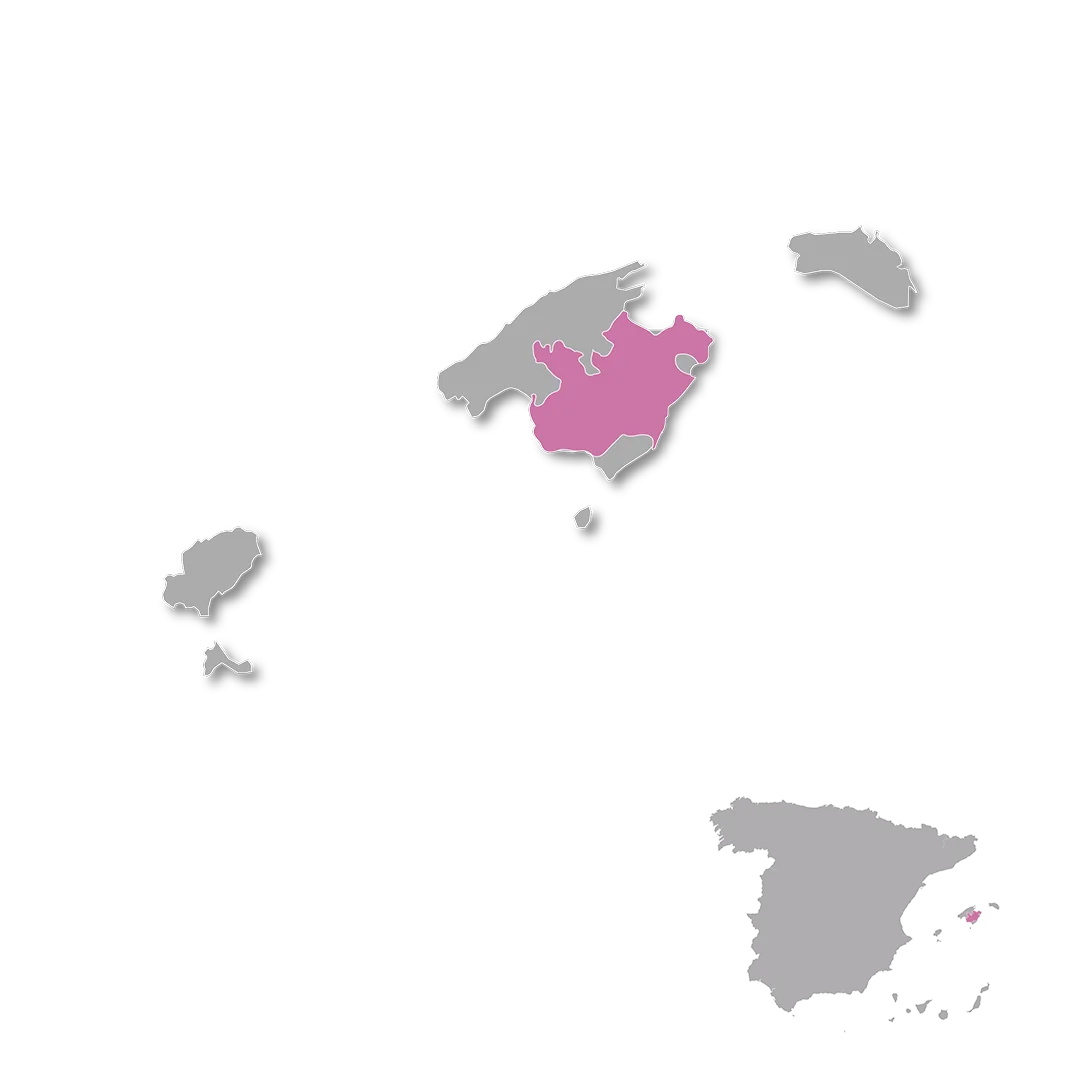
LATITUDE
LONGITUDE
subregions

The Balearic Islands wine region is like that perfectly curated Instagram account you can’t stop scrolling through: stunning visuals, authentic Mediterranean charm, and absolutely zero pretense.
Forget what you think you know about wine from the Spanish mainland. This isn’t your grandfather’s Rioja playbook. Here, on four sun-baked islands floating in the western Mediterranean, an ancient wine tradition is writing its modern comeback story with the entrepreneurial swagger of a tech startup and the soul of a family bodega that’s been perfecting its craft for centuries.
This in-depth guide on the Balearic Islands wine region covers history, terroir, grape varieties, wine production, top wineries, wine tourism experiences, and sustainability efforts, providing wine lovers with a comprehensive understanding of this unique Mediterranean wine destination.
The Baleares region encompasses all four Balearic Islands: Mallorca, Menorca, Ibiza, and Formentera.
Mallorca, as one of the larger islands, dominates the scene like a charismatic CEO running the show and plays a key role in wine production within the Balearic Islands. Think of it as Spain’s Mediterranean wine laboratory, where indigenous grape varieties that survived phylloxera, two world wars, and the tourism boom are now having their moment in the spotlight. This isn’t mass-market wine tourism; it’s boutique viticulture with serious ambition.
The region represents a fascinating paradox: while Spain’s national wine exports faced challenges in early 2025, with a 5.6% volume decline, Balearic wines bucked the trend, achieving a 4% sales growth, reaching 5.2 million litres sold worth €43 million. This isn’t a coincidence. It’s strategic positioning in the premium market segment, while most producers chase volume.
The numbers tell a compelling story of quality over quantity. While total production decreased 22% in 2024, economic value increased, indicating successful premium positioning. Main export markets include Germany (63% of exports), Switzerland (11%), and Denmark (6%). These are sophisticated wine markets that appreciate terroir-driven expressions and are growing familiar with the indigenous grape varieties in the region, thanks to increased tourism.
The Baleares wine region operates like a diversified investment portfolio, with each DO and VT classification serving different market segments:
Protected Geographical Indications (DO) (de origen):
The influence of the Tramuntana Mountains and the region's climate is significant, especially in coastal areas where the maritime climate benefits grape varieties like Malvasía, sometimes imparting subtle saline nuances to the wines.
Vino de la Tierra (VT) Classifications:
New plantings of Malvasía de Banyalbufar have begun in response to its aromatic character and high acidity.
Callet, a red grape variety well established in Felanitx, is often used in wines from these classifications, showcasing the unique terroir of the region.

Vineyard Hectares
WINERIES
The islands sit strategically in the western Mediterranean, 170km from the Iberian Peninsula, creating a unique maritime climate buffer. The west coast of Mallorca, shaped by the Tramuntana Mountains, offers a distinctive terroir that influences the character of local wines.
Pure magic, thanks to the Mediterranean climate—hot, dry summers with cooling sea breezes, mild winters, and crucially, harvest occurring before autumn storms. The Tramuntana Mountains protect Binissalem from northern winds, while eastern regions benefit from coastal influences. The Sierra de Alfaba mountain range also protects Mallorca’s vineyards from intense winds and cold. With 300+ sunny days annually, conditions remain consistently favourable for premium wine production. Mallorca’s climate is generally Mediterranean, with hot, dry summers and cool, rainy winters.
Mallorca’s geology reads like a textbook on limestone diversity. Binissalem features limestone with large gravel rocks providing drainage, while Pla i Llevant showcases limestone covered with iron-rich red clay (locally called “calvermel”). Vineyards are often planted in specific layouts and densities to optimize grape quality and reflect the unique characteristics of each region. These well-draining soils force vine rootsdeep, creating concentrated flavours while the limestone’s water retention prevents hydric stress during scorching summers. The soils in Mallorca are predominantly poor in nutrients but rich in limestone and clay, and vines thrive in these challenging conditions, contributing to the distinctiveness of the island’s wines.
The region leads Spain's sustainable wine revolution with genuine conviction, not marketing spin. Multiple producers employ organic and biodynamic practices, with Demeter certification becoming increasingly common. Wineries like Son Juliana operate entirely on renewable energy, while others focus on biodiversity preservation and chemical-free viticulture. The process of varietal recovery for local grape varieties in Mallorca is ongoing and involves collecting virus-free plant material. This commitment resonates with environmentally conscious consumers willing to pay premium prices for sustainable products.
The movement toward sustainability also makes business sense in a climate-sensitive region where long-term viability depends on environmental stewardship. Foreign investors specifically seek properties with sustainability potential, viewing environmental responsibility as a means of risk management.
The trend has shifted decisively toward Mallorcan grapes, with Callet perfectly answering current preferences for lighter-bodied, fresh reds that can be chilled. A new breed of grape varieties and wine styles is also emerging, reflecting innovation and adaptation to modern tastes. As leading sommelier Joan Arboix notes, “people don’t come to the island to drink what they can find at home”.
The region produces a full spectrum of wines with a strategic focus, ranging from concentrated red wines crafted with red grapes to white wines with floral aromas, higher acidity, and notable freshness. They even produce rosé wines, with lively flavours!
Many of the region's wines are defined by their freshness, which contributes to their balance and aromatic expressiveness. Some wines benefit from aging for a few years in a bottle before reaching their optimal quality.
Quality improvements are evident in international recognition: Macià Batle has won over 300 awards, including four gold medals at the 2025 Concours International de Lyon. Several wines from the region have been tasted and reviewed by experts, further highlighting their excellence.
When it comes to producing wine, the Balearic Islands stand out as an autonomous community with a wine culture as vibrant and sun-drenched as their coastlines. Here, centuries of tradition meet a new wave of innovation, all rooted in the islands’ devotion to their local grapes. The Balearic Islands have carved out a reputation for crafting wines that are unmistakably their own, thanks to a focus on indigenous grape varieties like Manto Negro, Callet, and the ever-versatile Moll.
This rich heritage is reflected in every bottle, whether it’s a bold red, a crisp white, or one of the region’s increasingly popular rosé wines. The islands’ winemakers are masters at coaxing out the best from their grapes, producing wine that captures the essence of Mediterranean life—fresh, lively, and full of character. The diversity of grape varieties grown across the islands means there’s a wine for every palate, from concentrated reds to aromatic whites and refreshing rosés that are perfect for sipping by the sea.
Classification here isn’t just about bureaucracy. It’s about protecting the integrity of Balearic wines and celebrating the unique terroir of each island. The system ensures that wines labelled from the Balearic Islands are true to their roots, made with local grapes and traditional methods that have been refined over generations. This commitment to authenticity and quality is what sets the region apart, making it a must-visit destination for wine lovers eager to taste the real spirit of Spain’s island paradise.
Balearic wines pair perfectly with local cuisine in a way that seems almost orchestrated by nature. The delicious local cuisine and wines offer a high-quality gastronomic experience that enhances the islands' appeal.
This isn’t accidental! The Mediterranean diet’s emphasis on fresh seafood, local produce, and traditional dishes evolved in tandem with these wines over centuries.
Mallorca is the premier destination in the region. This beautiful island, with its scenic landscapes and picturesque vineyards, stands out as a premier destination for wine tourism, blending natural beauty with a rich historical significance.
Wine tourism on the island of Mallorca operates on multiple levels, ranging from intimate family finca visits to helicopter tours that visit multiple wineries. As a prime destination for wine tourism, the island attracts 15 million annual visitors, creating unprecedented local demand for premium experiences.
Most of Mallorca's wineries operate in a château-style manner, managing both vineyards and production, creating authentic, story-driven experiences that command premium pricing. Visitors can explore different wine regions, each offering distinct climatic and soil conditions that shape the wines. The average price of a cellar tour with wine tasting is €44.00.
Popular activities include sunset vineyard tours, vintage train rides through the vineyards, flamenco and wine pairings, and the option to book a private tour for a more exclusive and personalized experience. This isn’t just tourism, it’s lifestyle marketing that positions Balearic wines as luxury experiences rather than mere beverages.
The producers listed below craft some of the finest wines from the Balearic Islands and offer unique wine experiences, including vineyard and wine tours.
The region has successfully positioned itself in what economists call the "sweet spot": premium enough to command healthy margins, accessible enough to attract interest from wine lovers, and authentic enough to sustain long-term brand value.
In a wine world increasingly dominated by industrial production and marketing manipulation, the Baleares offer something precious: place-based authenticity that tastes like Mediterranean sunshine and smells like success.